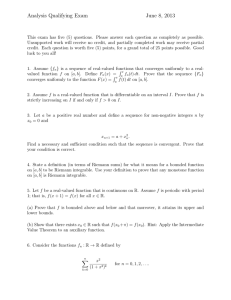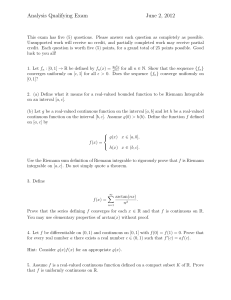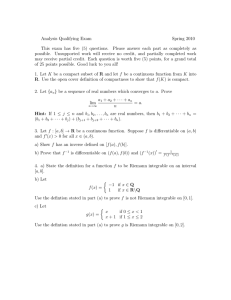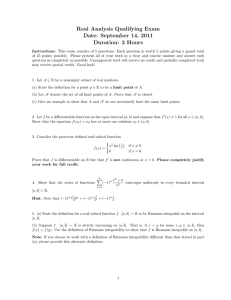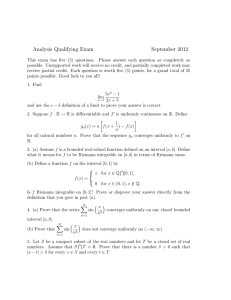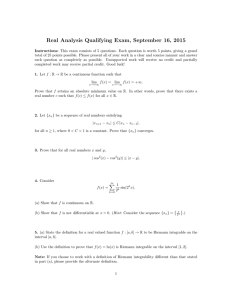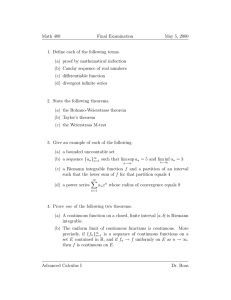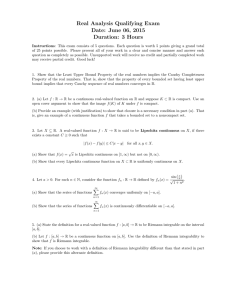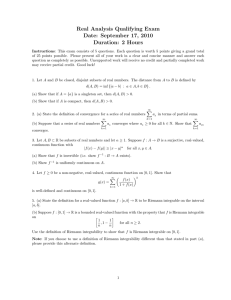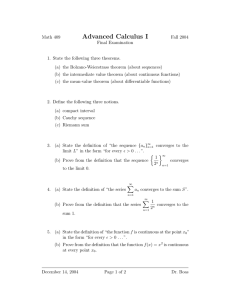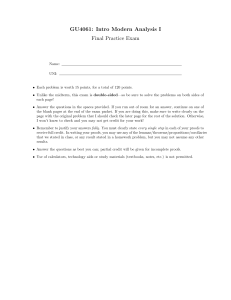Analysis Qualifying Exam September 17, 2013
advertisement
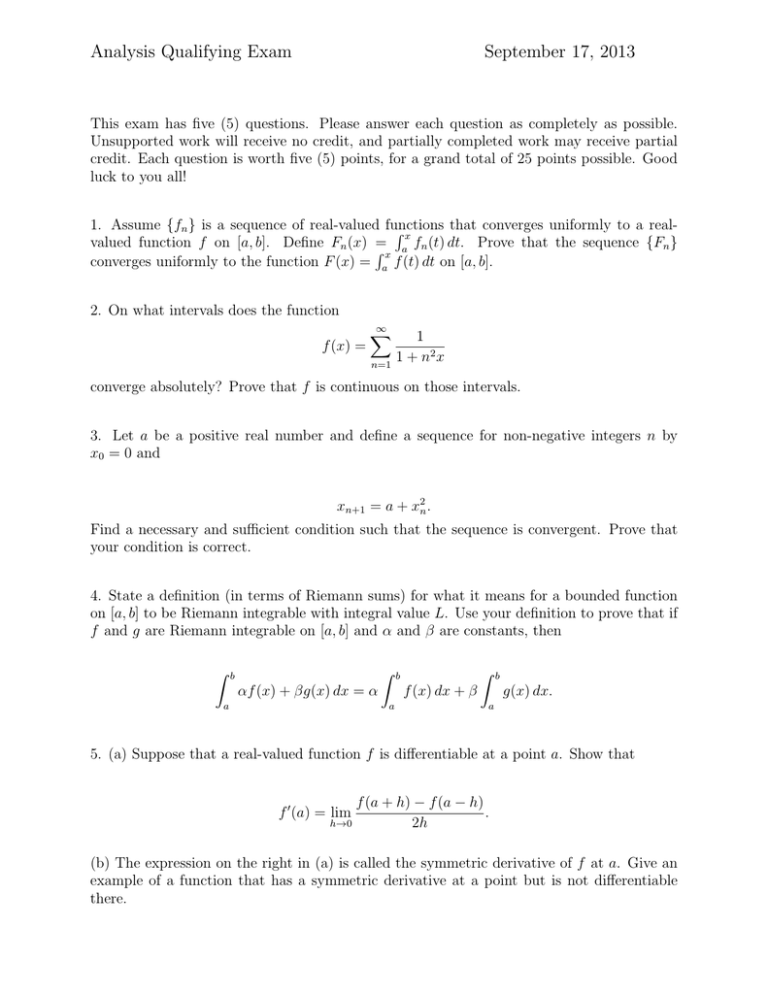
Analysis Qualifying Exam
September 17, 2013
This exam has five (5) questions. Please answer each question as completely as possible.
Unsupported work will receive no credit, and partially completed work may receive partial
credit. Each question is worth five (5) points, for a grand total of 25 points possible. Good
luck to you all!
1. Assume {fn } is a sequence of real-valued functions
that converges uniformly to a realRx
valued function f on [a, b]. Define Fn (x) R= a fn (t) dt. Prove that the sequence {Fn }
x
converges uniformly to the function F (x) = a f (t) dt on [a, b].
2. On what intervals does the function
f (x) =
∞
X
n=1
1
1 + n2 x
converge absolutely? Prove that f is continuous on those intervals.
3. Let a be a positive real number and define a sequence for non-negative integers n by
x0 = 0 and
xn+1 = a + x2n .
Find a necessary and sufficient condition such that the sequence is convergent. Prove that
your condition is correct.
4. State a definition (in terms of Riemann sums) for what it means for a bounded function
on [a, b] to be Riemann integrable with integral value L. Use your definition to prove that if
f and g are Riemann integrable on [a, b] and α and β are constants, then
Z
b
Z
αf (x) + βg(x) dx = α
a
b
Z
f (x) dx + β
a
b
g(x) dx.
a
5. (a) Suppose that a real-valued function f is differentiable at a point a. Show that
f (a + h) − f (a − h)
.
h→0
2h
f 0 (a) = lim
(b) The expression on the right in (a) is called the symmetric derivative of f at a. Give an
example of a function that has a symmetric derivative at a point but is not differentiable
there.
